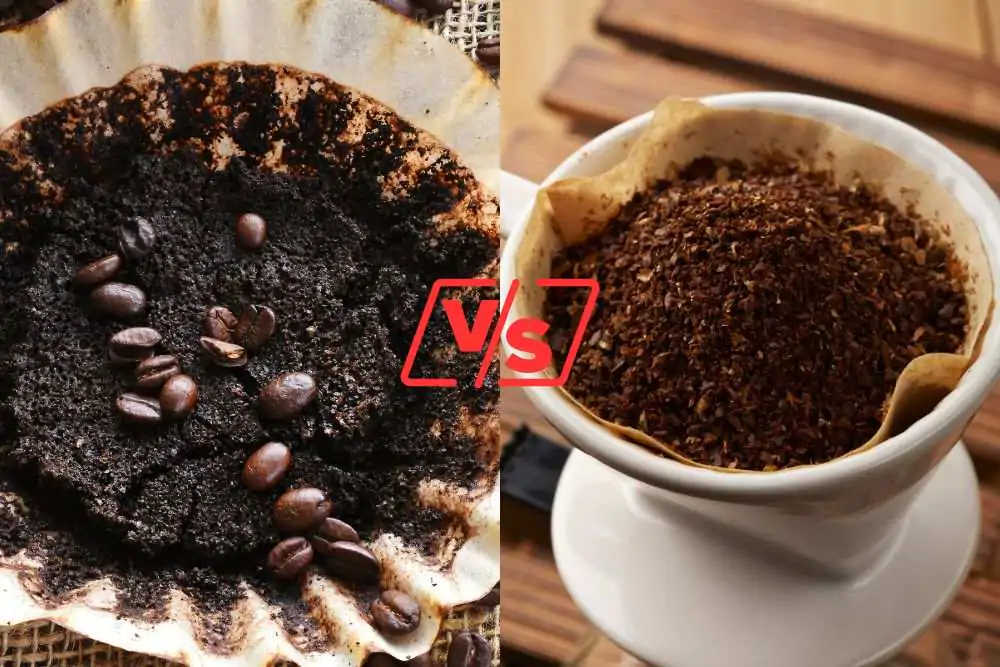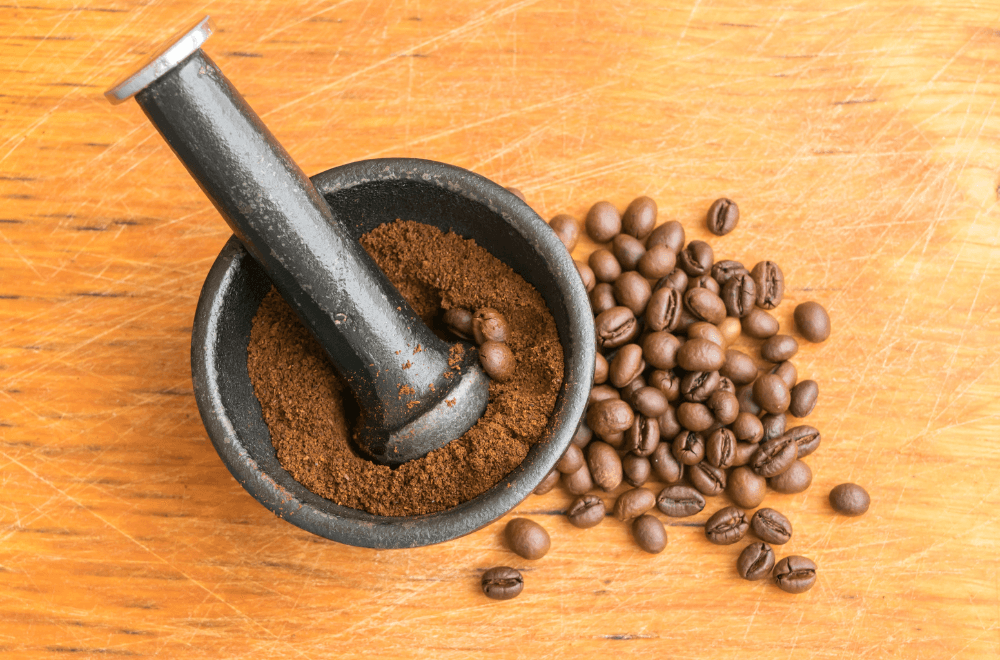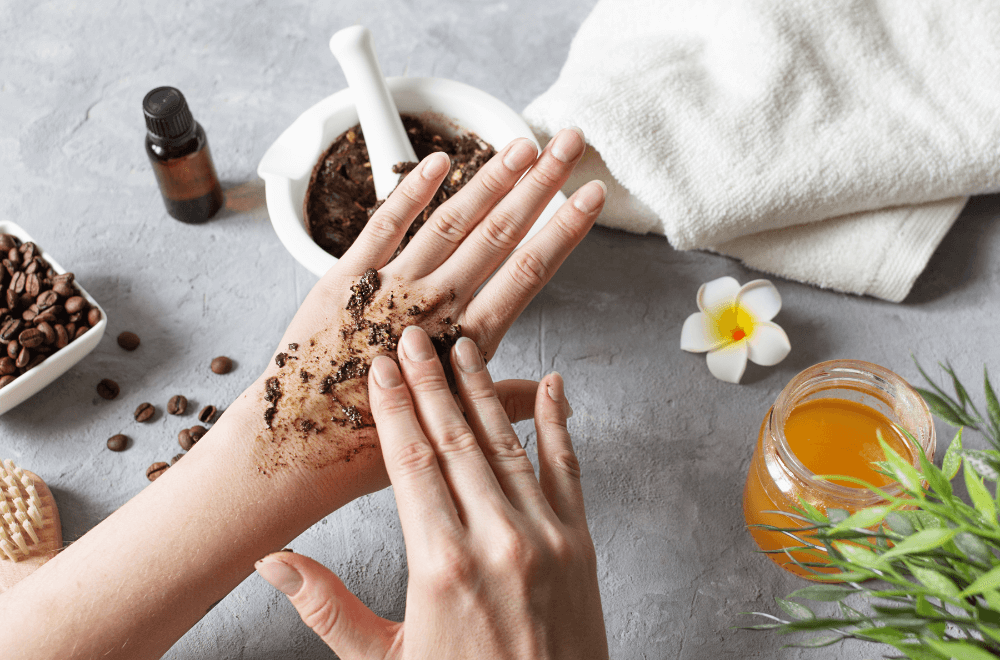Many people use these terms interchangeably, but our coffee grounds vs. coffee grinds guide will detail everything you need to know about these two items.

When learning about coffee, one of the most common issues you’re likely to run into is trying to figure out how “coffee grinds” is different from “coffee grounds.” Similar but not identical, you use these terms to address two completely different subjects.
One relates to the setting on the grinder. It includes multiple levels that define the size of your coffee particles. Meanwhile, the other one refers to the coffee particles themselves that come out of the grinder at the end.
If you want to use them correctly in the right context, check out my comparison below.
- What Are Coffee Grounds And Coffee Grinds?
- What Do Coffee Grounds And Coffee Grinds Have In Common?
- Coffee Grounds Vs. Coffee Grinds: The Differences
- What's Better About Coffee Grinds?
- What's Better About Coffee Grounds?
- When Should You Use Coffee Grinds And Why?
- When Should You Use Coffee Grounds And Why?
What Are Coffee Grounds And Coffee Grinds?
There are a few key differences in terms of the terminology you should know about. First off, the term “grind” means the action of smashing up something, like beans or nuts. In the coffee industry, “coffee grinds” refer to the coarseness or fineness of a certain method of extraction which usually includes fine, medium, and coarse grinds.
When you grind the coffee beans, you are adjusting the “coffee grinds.”
Meanwhile, we have “coffee grounds” as the crushed particles you get after you grind the beans out of a grinder and brew them. It’s a leftover product. You can use “coffee grounds” to make compost in your garden, as a fertilizer, or to keep pests away.
Check out our explainer on can you reuse coffee grounds.
What Do Coffee Grounds And Coffee Grinds Have In Common?
Both of them are some of the most talked-about terms in the coffee industry and relate to the act of crushing whole beans into tiny bits you use for the brew.

Coffee Grounds Vs. Coffee Grinds: The Differences
| Coffee Grinds | Coffee Grounds |
| Refer to the size of the coffee granules. | Refer to the granules themselves. |
| There are usually five levels of coffee grinds, including powdery, medium-fine, medium, medium-coarse, and coarse. | Used coffee grounds are the leftovers after you finish brewing your cup of coffee. |
| Setting the right grind size has a big impact on your coffee’s flavor as it can wind up over or under-extracted. | Have multiple uses even rather than being dumped into the trash bin. It can work in your garden, on your skin, or keep odors away. |
What’s Better About Coffee Grinds?
Learning about coffee grinds is one of the most crucial steps to becoming a skilled barista. Other than getting the grind size correct, you must also learn about contact time, extraction rates, and flow rates. All of these features contribute to the final profile of a successful brew.
For example, a higher contact time combined with too fine grind results in an over-extracted, bitter brew. Meanwhile, a coarser grind that goes with a shorter contact time will make a weak and stale cup of Joe.
What’s Better About Coffee Grounds?
Coffee grounds can be used as compost to feed the soil and nourish your plants. Composting used coffee grounds is some of the most common ways to reuse your ground coffee after brewing. Other than that, you can use it as a fertilizer by dumping it straight into the soil.

Outside of the garden, coffee grounds can be used to exfoliate your skin. When mixing coffee grounds with other moisturizing ingredients such as honey or coconut oil, the mixture will remove the dead cells on your body, leaving you with smooth, glowing skin. If you run into an annoying odor in your kitchen or living space, rub coffee grounds all over the surface or on your hands after cooking to remove the smell.
When Should You Use Coffee Grinds And Why?
Use “coffee grinds” when you are referring to the size of the compounds you want to achieve and define the controlled extraction. By adjusting the grind size, you are creating a grind profile. A wrong profile can be caused by the wrong size or inconsistent grinds, which all contribute to the sourness or bitterness in your brew.
That’s why a great barista needs to understand the relationship between the grind size, extraction, and flavor.
When Should You Use Coffee Grounds And Why?
You can use “coffee grounds” for many different things around the house. This wonderful leftover should not end its life in the trash bin. Instead of taking up space in the landfill, use coffee grounds to grow gourmet mushrooms, reduce odors, exfoliate, and get rid of snails or slugs in your garden.
